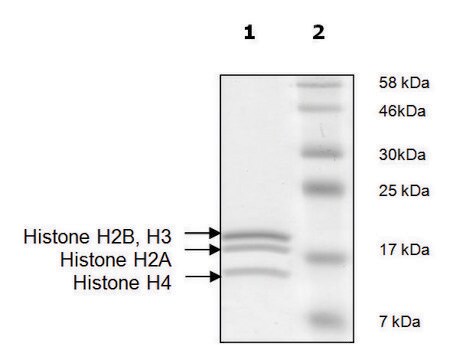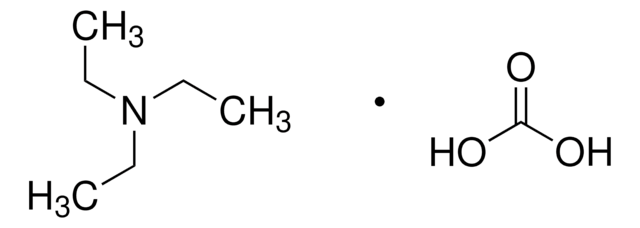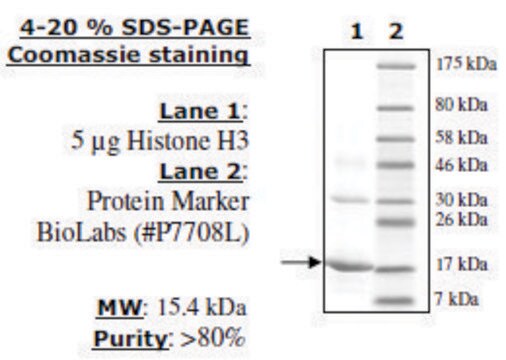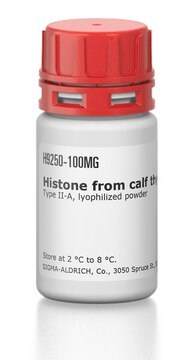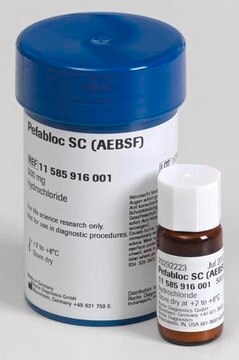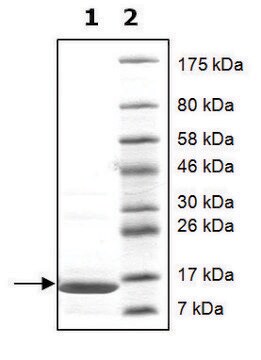SRP6590
Core Histones human
≥95% (SDS-PAGE)
Synonym(s):
HeLa Core Histones
Sign Into View Organizational & Contract Pricing
All Photos(1)
About This Item
UNSPSC Code:
12352200
NACRES:
NA.32
Recommended Products
biological source
human
Assay
≥95% (SDS-PAGE)
form
liquid
packaging
pkg of 50 and 100 μg
concentration
1 mg/mL
technique(s)
cell based assay: suitable
shipped in
dry ice
storage temp.
−70°C
General description
A nucleosome is the basic repeating unit of chromatin in which 146 base pairs of DNA wrap twice around a histone octamer consisting of two copies of each of the core histones, H2A, H2B, H3, and H4. The combination of two H2A/H2B dimers and one H3/H4 tetramer create the nucleosome core. Further, histone H1 combines with these histones to form 30nm fibers. These fibers have six nucleosomes per turn in a solenoid arrangement. Histone H3 undergoes many modifications which include acetylation, methylation, and phosphorylation that are important for regulation of gene transcription.
Physical form
50 mM sodium phosphate, pH 6.9, containing 10 mM sodium chloride and 1 mM β-mercaptoethanol.
Signal Word
Warning
Hazard Statements
Precautionary Statements
Hazard Classifications
Eye Irrit. 2 - Skin Sens. 1
Storage Class Code
11 - Combustible Solids
WGK
WGK 3
Flash Point(F)
Not applicable
Flash Point(C)
Not applicable
Choose from one of the most recent versions:
Certificates of Analysis (COA)
Lot/Batch Number
Don't see the Right Version?
If you require a particular version, you can look up a specific certificate by the Lot or Batch number.
Already Own This Product?
Find documentation for the products that you have recently purchased in the Document Library.
Customers Also Viewed
Transcription regulation by histone methylation: interplay between different covalent modifications of the core histone tails.
Zhang Y and Reinberg D
Genes & Development, 15(18), 2343-2360 (2001)
Roberto Fabian et al.
Molecules (Basel, Switzerland), 26(16) (2021-08-28)
We report data from single molecule studies on the interaction between single DNA molecules and core histones using custom-designed horizontal magnetic tweezers. The DNA-core histone complexes were formed using λ-DNA tethers, core histones, and NAP1 and were exposed to forces
Our team of scientists has experience in all areas of research including Life Science, Material Science, Chemical Synthesis, Chromatography, Analytical and many others.
Contact Technical Service